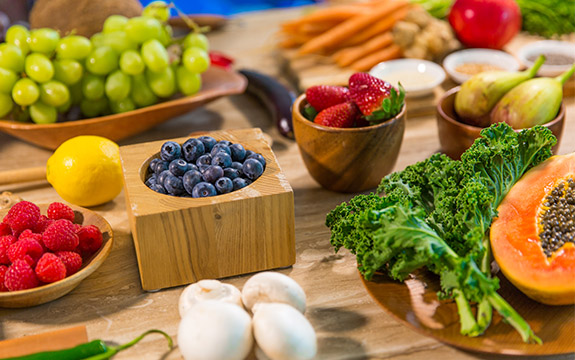The science behind our obsession with food on TV

In Summary
- Viewers can vicariously taste and judge food on television based on memories
- Visuals of food on screens can induce emotional stimuli in viewers
- Enjoyment of food involves taste, vision, touch/texture, temperature
MasterChef, My Kitchen Rules, Hell’s Kitchen – our television screens are loaded with shows about food. But why do we care about food we can’t even taste?
“Culinary-shows like MasterChef result in what we call ‘vicarious tasting’,” says neuroscience lecturer and sensory science expert Dr Mark Schier.
“This stems from our experience of tasting something similar and relies on our memory of what something like this might taste like.”
To give an example, he offers two scenarios - crispy chips stacked in a small basket or soggy chips lying on a plate.
“The choice is yours, and you can make a judgement of which would be better, even if the taste is the same. The visual sense is tangible, as we can photograph and record it.”
Basically, you get to play the role of judge from the comfort of your couch using just your eyes. It’s no wonder that after ten years MasterChef continues to resonate with audiences.
“These shows are now part of pop-culture and have resulted in making food culture accessible to all, leading to a culinary-centric lifestyle for many that includes watching food TV channels, subscriptions to foodie magazines, and travelling the world to experience culinary cultures.”
Understanding #foodporn
But food isn’t just all over our televisions, it’s all over our phones and other screens too.
“Food lends itself so well to visual-based social media and as we know pictures increase engagement of followers who will also experience some sort of stimuli – emotional in many cases,” says dietetics and nutrition lecturer, Dr Annie Lassemillante.
“Some have branded these types of images as ‘food-porn.”
And because of our obsession with the way food looks, cafes, restaurants and marketers are putting in extra effort to keep our eyes entertained.
“There is a lot of emphasis on how food looks and regular café customers can attest to the change in food presentation over the past few years,” says Dr Lassemillante.
“The colour of plates, utensils, lighting and the food itself are important in food presentation because colours ‘interact’. Food marketers are well-aware of this and other visual factors that impact food consumption and perception through decades of market research.”
“For example, the colour of food will impact on taste perception - orange juice is perceived to be sweeter when it is bright yellow-orange in colour when compared to light-yellow orange juice.”
When it comes to appetite and actually liking food, looking good is also key.
“The sight of food is likely to increase hunger in some people and attractive presentation is likely to result in increased liking of the food. Many people can surely relate to this, therefore attractive presentation is important and even necessary in some cases,” says Dr Schier.
Although, however good it looks the dish still has to deliver on flavour.
“If the food looks good, and does not taste good it is still a poor experience overall. If it looks good, and tastes good, then that is the best option obviously.”
The science of taste
Dr Schier explains that the science behind taste is largely generated by taste receptors contained within taste buds within structures known as papillae that are mostly on the surface of the tongue.
“These are quite sensitive to different chemicals in the food in our mouths.”
“We also rely upon other senses, particularly smell, for what most people consider to be taste. We are usually completely unaware of this, except when we have a head cold or our nose is blocked.
‘We also use sensory information from vision, touch/texture, temperature, and even hearing to complete the experience,” he says.
“Food people often talk of flavour – which is probably a combination of taste and smell; they also often talk of mouth feel, which also picks up the experience of temperature, texture and another sense known as trigeminal chemo-sense which is different to taste, and includes the experience of heat from chilli, among others.”
So next time you’re brunching or just watching people cook on television, take note of which of your senses are at work and think about why you’re so entertained.

